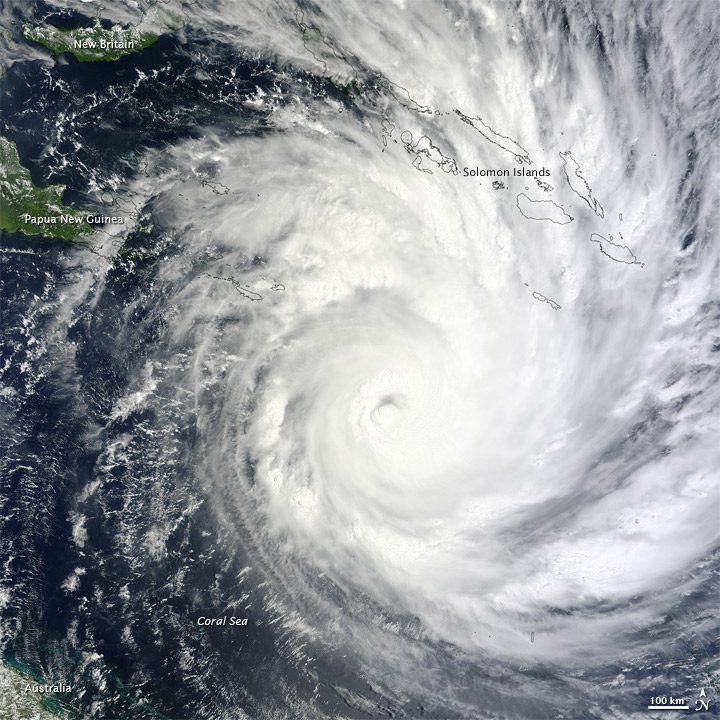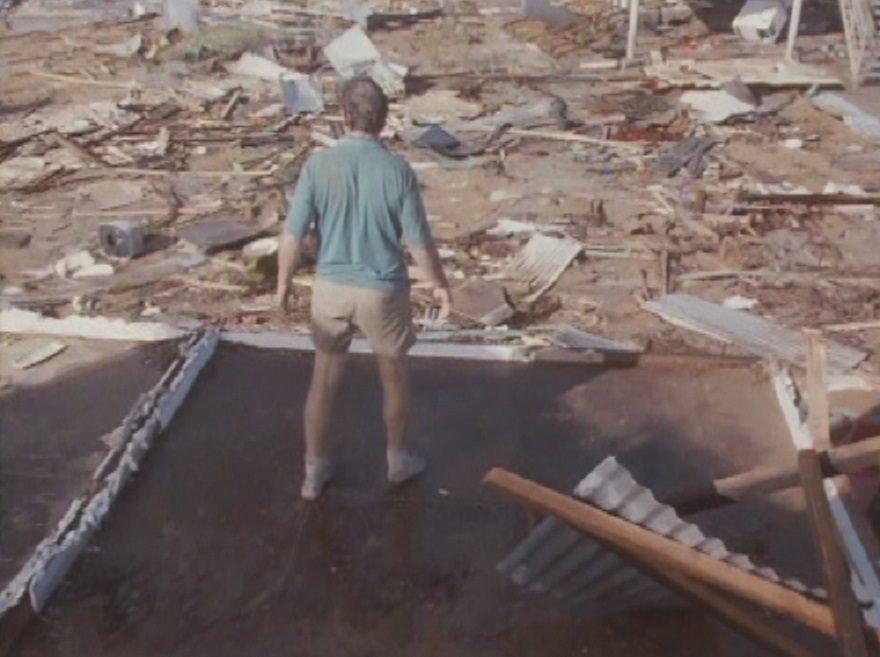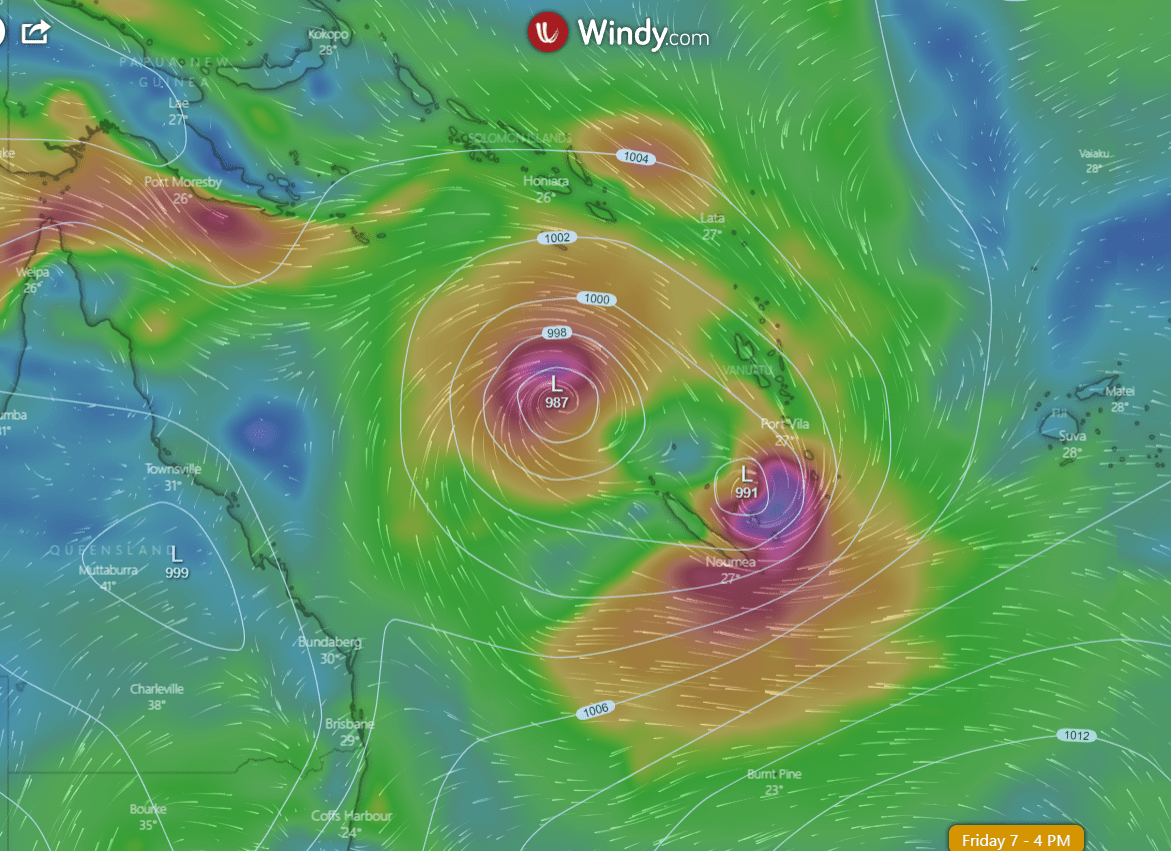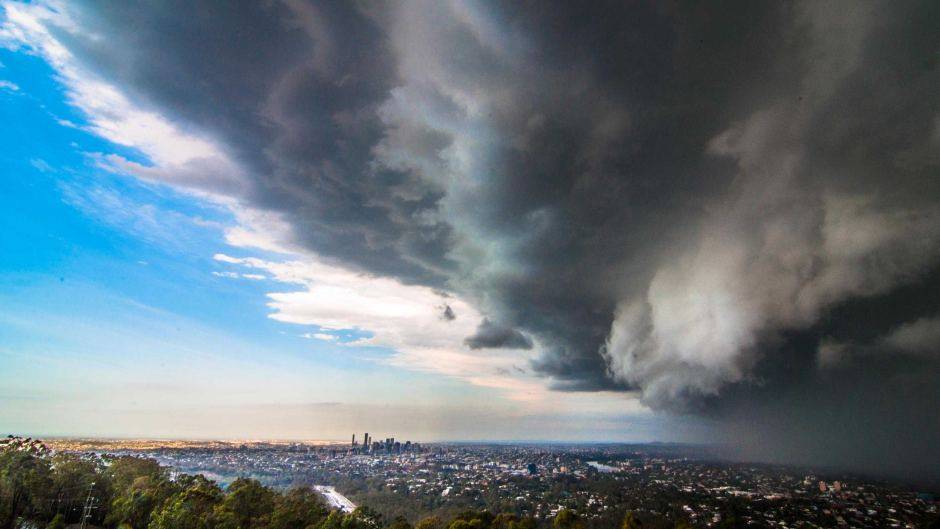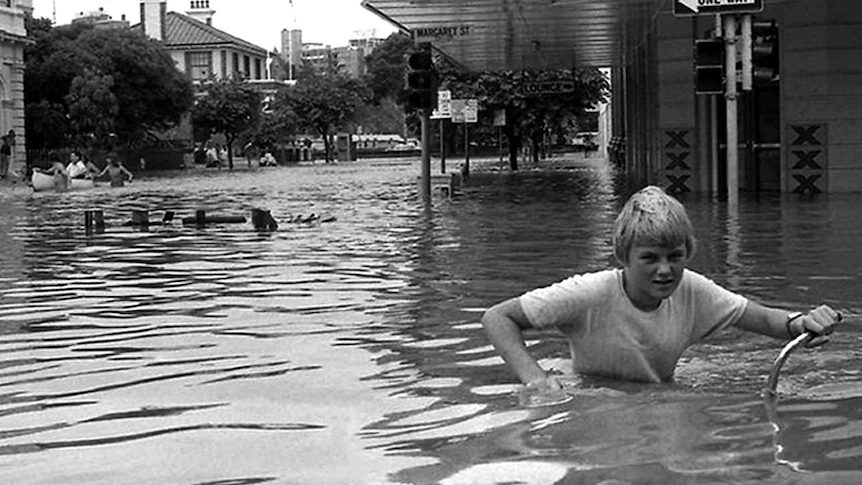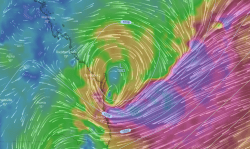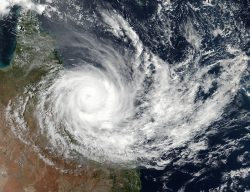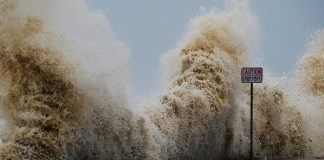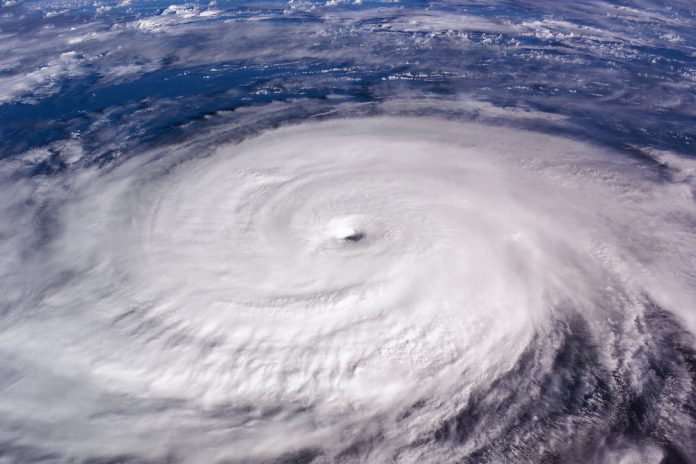
Introduction
Australia is known for its unique and diverse climate, from the tropical north to the temperate south. However, this diversity also includes extreme weather events that can have devastating impacts on the country and its inhabitants. Understanding and preparing for these events is crucial for ensuring public safety and minimizing damage.
Additionally, recent research suggests that the impacts of human-caused climate change are exacerbating many of these extreme weather events. This article will explore the most severe weather events in Australia, including tropical cyclones, torrential rain and flooding, forest fires, drought and water shortage, heat waves, and sea level rise.
We will also discuss the role of climate change in these events and the importance of adaptation.
Tropical Cyclones
Tropical cyclones, also known as typhoons or hurricanes, are common weather events in northern Australia. These intense weather systems form over warm waters and can bring strong winds, heavy rain, and storm surges. In recent years, tropical cyclones such as Cyclone Yasi and Cyclone Debbie have caused significant damage to northern Australia and coastal areas.
The Australian Bureau of Meteorology (BOM) notes that the number of tropical cyclones in the region has not increased in recent decades. Still, their intensity may be increasing due to warming sea surface temperatures.
6 Of The Worst Tropical Cyclones In Australian History
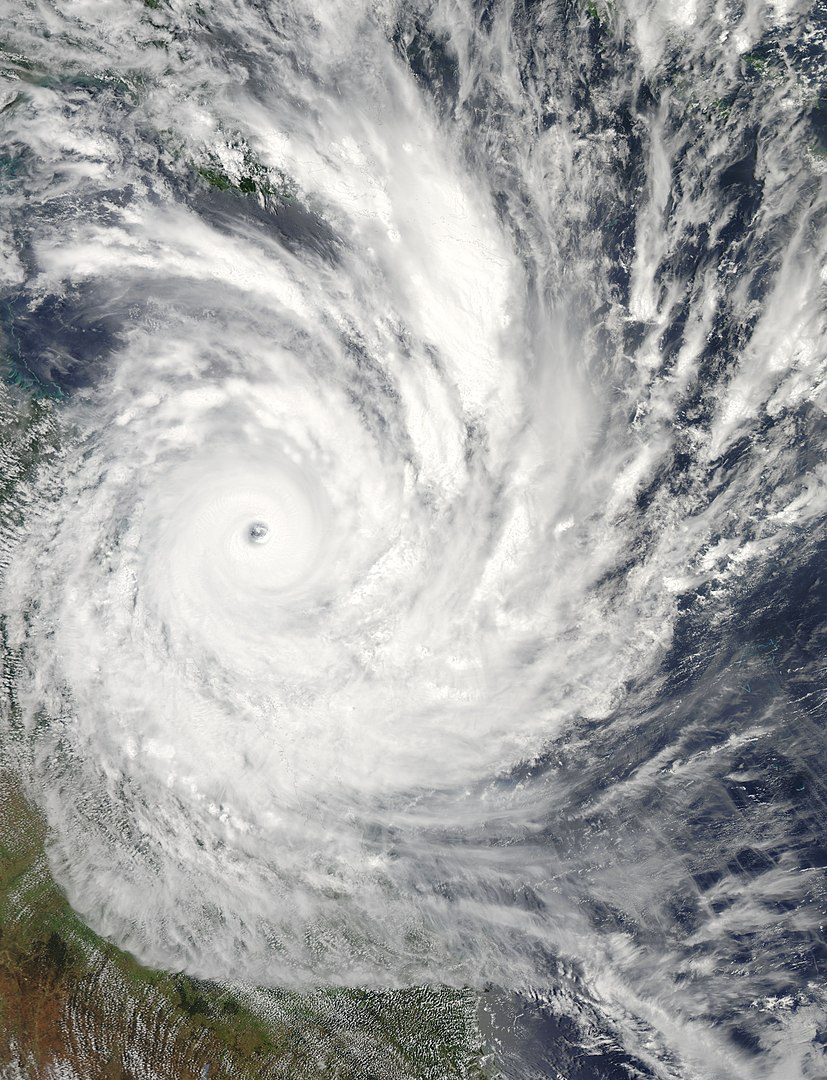
Cyclone Yasi (2011)
One of the most powerful tropical cyclones to ever hit Australia, Cyclone Yasi struck the coast of Queensland in 2011, bringing winds of up to 285km/h and causing widespread damage and flooding. The storm was fueled by warming sea surface temperatures in the Pacific Ocean, which have been linked to human-caused climate change.
Cyclone Yasi was a category five storm that hit the coast of Queensland in 2011, causing widespread damage and flooding.
The storm was fueled by warming sea surface temperatures in the Pacific Ocean, which have been linked to human-caused climate change. It brought winds up to 285 km/h and heavy rain, causing floods and landslides throughout Queensland.
The storm caused an estimated $1.4 billion in damages and resulted in the evacuation of thousands of residents. The Bureau of Meteorology issued emergency flood warnings and advised residents to evacuate low-lying areas. The storm was also linked to the La Niña weather phenomenon, which can bring increased rainfall to parts of Australia.
While natural variability plays a role in the formation and intensity of tropical cyclones, the warming of the planet due to anthropogenic climate change is increasing the likelihood and severity of such events.
The intensity of heavy rainfall events has increased in recent years due to human-induced climate change. Cyclone Yasi highlights the importance of climate change adaptation in the face of increasing extreme weather events and the need for preparedness and resilience in the face of such natural hazards.
Cyclone Tracy (1974)
One of the deadliest tropical cyclones in Australian history, Cyclone Tracy struck the northern city of Darwin on Christmas Eve in 1974, killing 65 people and destroying more than 70% of the city’s buildings. The storm brought winds up to 217km/h and was fueled by the El Niño-Southern Oscillation (ENSO) weather phenomenon, which has been linked to global warming.
Cyclone Tracy was considered one of the most destructive tropical cyclones ever to hit Australia, causing widespread damage and loss of life.
The storm brought winds up to 217 km/h and heavy rain, causing flash floods and landslides throughout the city of Darwin and surrounding areas. The storm caused an estimated $837 million in damages (in 1974 dollars) and resulted in the evacuation of thousands of residents.
The Bureau of Meteorology issued emergency flood warnings and advised residents to evacuate low-lying areas. The storm was also linked to the El Niño-Southern Oscillation (ENSO) weather phenomenon, which can affect weather patterns in parts of the world, including Australia.
While natural variability plays a role in the formation and intensity of tropical cyclones, the warming of the planet due to anthropogenic climate change is increasing the likelihood and severity of such events.
The increasing frequency and intensity of extreme weather events highlight the importance of climate change adaptation in the face of such natural hazards. Cyclone Tracy was a tragic reminder of the devastating power of tropical cyclones and the need for preparedness and resilience in the face of such extreme weather events.
Cyclone Larry (2006)
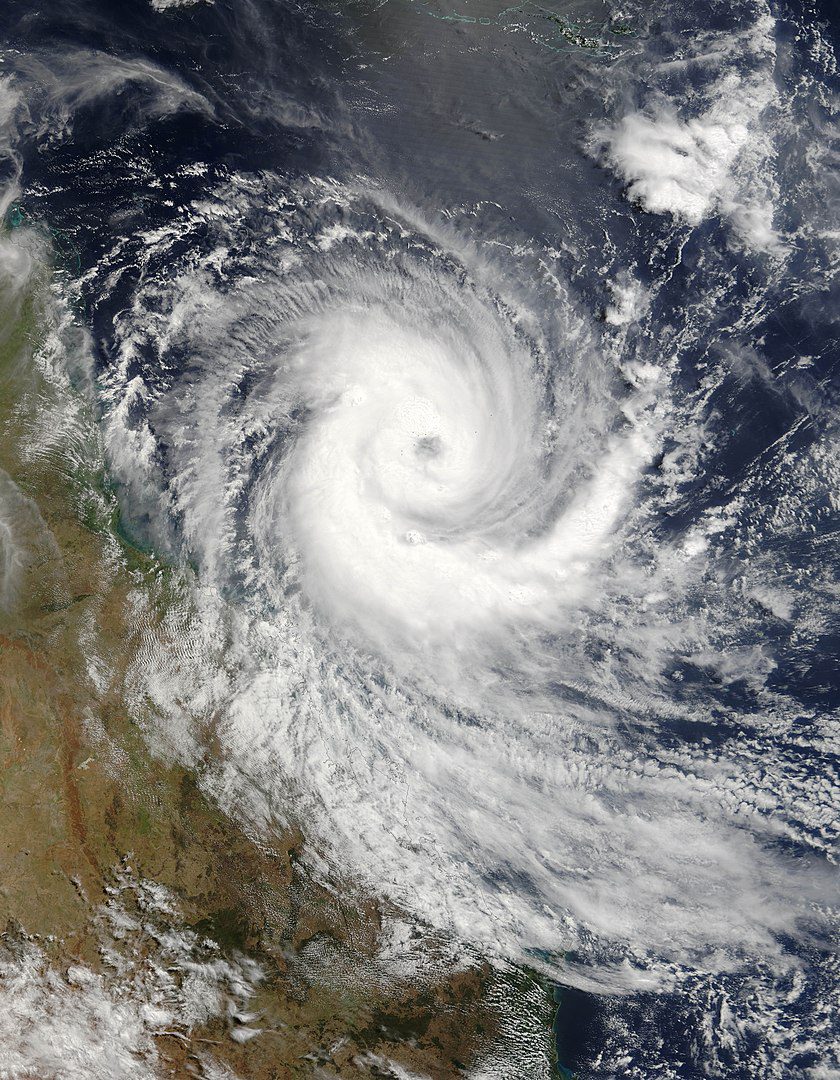
Cyclone Larry was a category five storm that hit the coast of Queensland in 2006, causing widespread damage and flooding. The storm was fueled by warming sea surface temperatures in the Pacific Ocean, which have been linked to human-caused climate change.
Cyclone Larry was considered one of the most destructive tropical cyclones ever to hit the state of Queensland, causing widespread damage to homes, businesses, and infrastructure. The storm brought winds up to 285 km/h and heavy rain, causing flash floods and landslides throughout the state.
The storm caused an estimated $1.5 billion in damages and resulted in the evacuation of thousands of residents. The Bureau of Meteorology issued emergency flood warnings and advised residents to evacuate low-lying areas. The storm was also linked to the El Niño-Southern Oscillation (ENSO) weather phenomenon, which can affect weather patterns in parts of the world, including Australia.
While natural variability plays a role in the formation and intensity of tropical cyclones, the warming of the planet due to anthropogenic climate change is increasing the likelihood and severity of such events. The increasing frequency and intensity of extreme weather events highlight the importance of climate change adaptation in the face of such natural hazards.
Cyclone Debbie (2017)
Cyclone Debbie was a category four storm that hit the coast of Queensland in 2017, causing widespread damage and flooding. The storm was fueled by warming sea surface temperatures in the Pacific Ocean, which have been linked to human-caused climate change.
It brought winds up to 260 km/h and torrential rain, causing widespread flooding throughout Queensland and New South Wales. The storm caused an estimated $1 billion in damages and resulted in the evacuation of thousands of residents. The storm also caused significant damage to infrastructure, including power lines, homes, and businesses.
The Bureau of Meteorology issued emergency flood warnings and advised residents to evacuate low-lying areas. The storm was also linked to the La Niña weather phenomenon, which can bring increased rainfall to parts of Australia. While natural variability plays a role in the formation and intensity of tropical cyclones, the warming of the planet due to anthropogenic climate change is increasing the likelihood and severity of such events.
It was also noted that the intensity of heavy rainfall events has increased in recent years due to human-induced climate change. In addition, the storm also caused significant damage to the Great Barrier Reef, with coral bleaching and death reported in the aftermath of the storm. Overall, The storm highlights the need for climate change adaptation in the face of increasing extreme weather events.
Cyclone Oswald (2013)
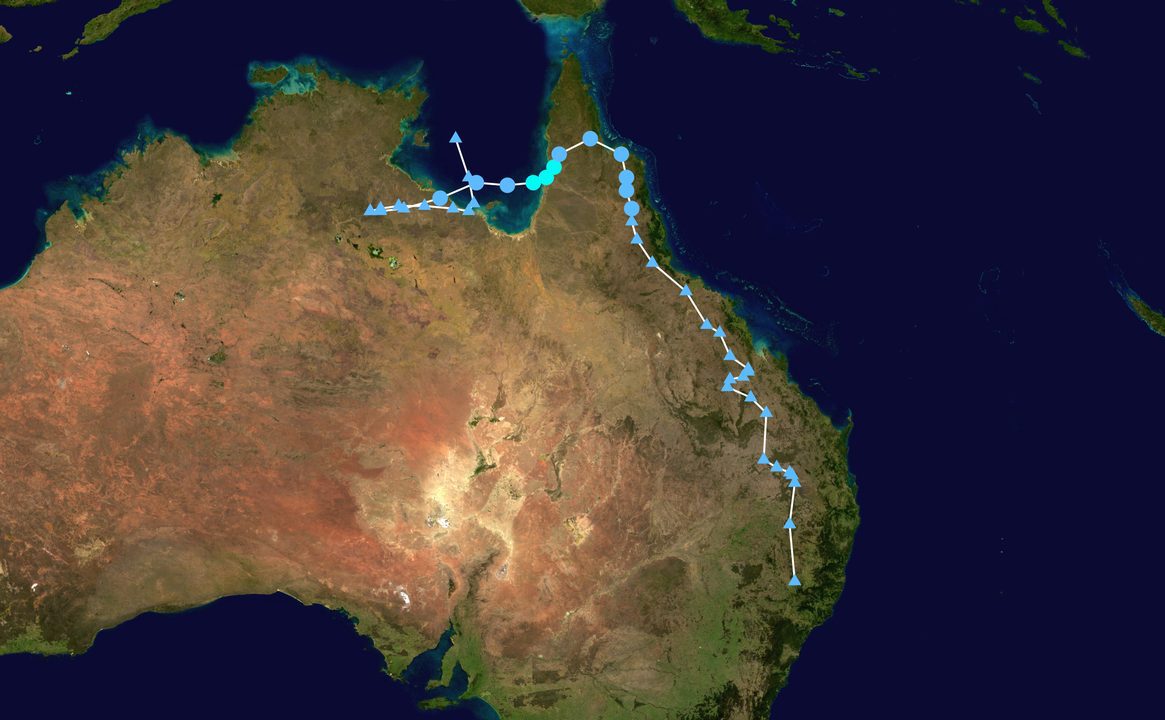
Cyclone Oswald was a category one storm that hit the coast of Queensland in 2013, causing widespread damage and flooding. The storm was fueled by warming sea surface temperatures in the Pacific Ocean, which have been linked to human-caused climate change. It brought heavy rain and strong winds, causing flash floods and landslides throughout Queensland.
The storm also caused power outages and damage to infrastructure, causing an estimated $1.5 billion in damages. The Bureau of Meteorology issued emergency flood warnings and advised residents to evacuate low-lying areas. The storm was also noted for its unusual weather patterns linked to the Indian Ocean Dipole. This climate pattern can affect weather patterns in parts of the world, including Australia.
While natural variability plays a role in the formation and intensity of tropical cyclones, the warming of the planet due to anthropogenic climate change is increasing the likelihood and severity of such events.
Cyclone Mahina – The Deadliest Cyclone In Recorded Australian History
- Cyclone Mahina was the deadliest tropical cyclone in Australian history, hitting the coast of Queensland in 1899 and killing over 400 people.
- The storm brought winds of up to 217km/h and a storm surge of up to 10 meters, which caused widespread damage and flooding.
- The storm struck the town of Bathurst Bay, where a pearling fleet of over 70 boats was moored, resulting in the loss of nearly all boats and the majority of the pearlers.
- Cyclone Mahina was considered a category 5 storm, the highest category on the Australian scale.
- The storm caused damage and loss of life along a 300-kilometer stretch of the coast from Cape Melville to Cairns.
- The storm resulted in the loss of nearly all buildings in Bathurst Bay, and most of the buildings in the nearby town of Almaden were destroyed.
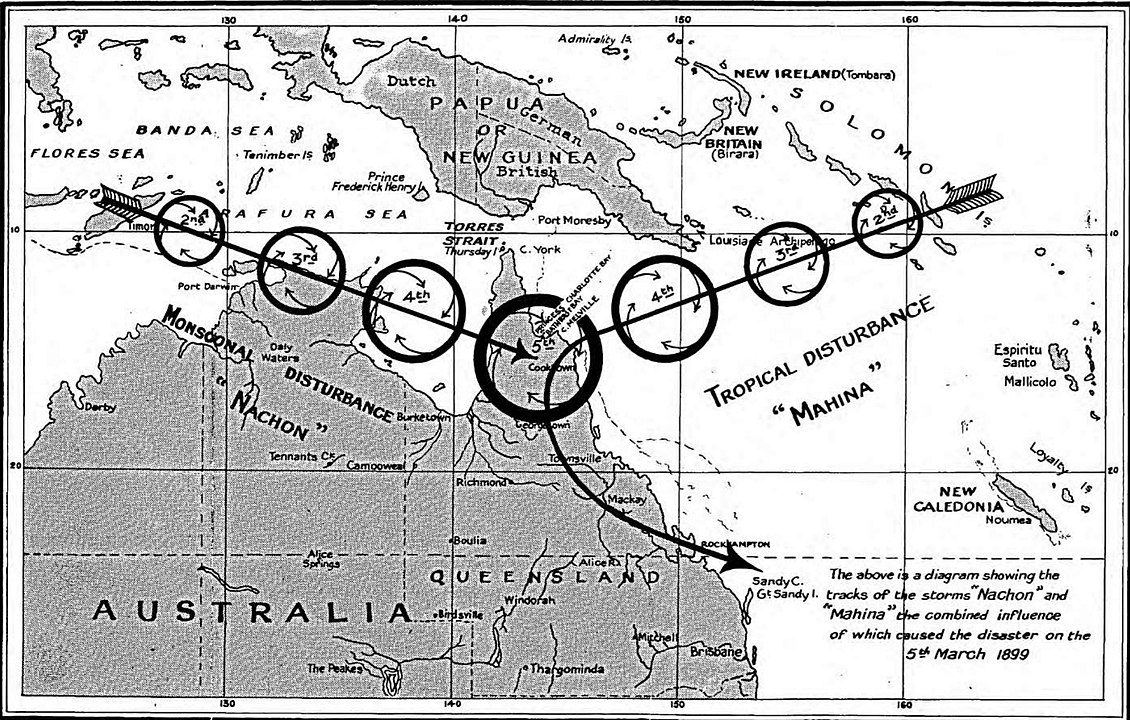
Torrential Rain and Flooding
Heavy rainfall events can also significantly impact Australia, leading to widespread flooding and landslides. For example, the 2010-2011 Queensland floods were one of the most devastating natural disasters in the country’s history.
Research suggests that global warming is increasing the intensity of heavy rainfall events, leading to more severe flooding. This highlights the importance of emergency flood warnings and preparedness in at-risk areas.
5 Of the Worst Flooding Events In Australian History
Queensland floods (2010-2011)
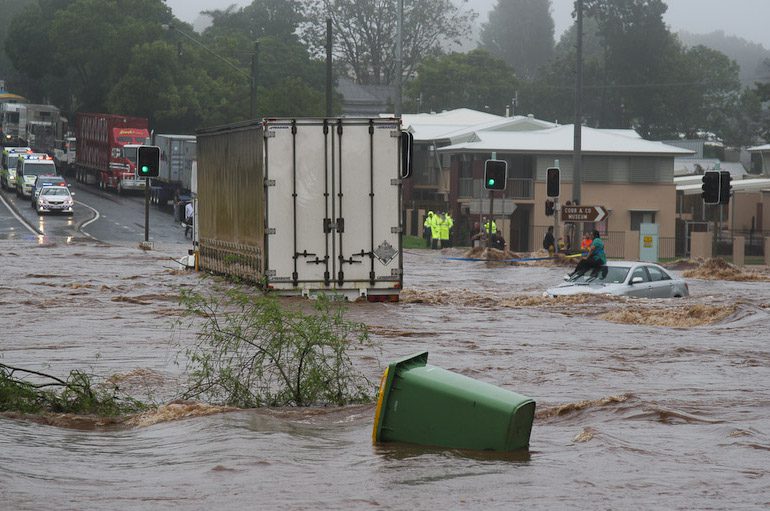
One of the worst flooding events in Australian history, the Queensland floods of 2010-2011, were caused by heavy rainfall brought on by the La Niña weather phenomenon. The floods affected an area the size of France and Germany combined, causing widespread damage and loss of life. Climate change has been linked to an increased frequency and severity of heavy rainfall events.
The heavy rainfall caused flash floods and landslides throughout the state and resulted in the evacuation of thousands of residents. The Bureau of Meteorology issued emergency flood warnings and advised residents to evacuate low-lying areas.
One of the most devastating floods was the Toowoomba flash flood, which occurred on January 10, 2011. A “wall of water” swept through the city of Toowoomba and the Lockyer Valley, causing widespread damage and loss of life. The flash flood was caused by a severe thunderstorm that brought heavy rainfall to the area, causing a flash flood in Lockyer Creek.
The floodwaters reached record levels in some areas, causing a “wall of water” to sweep through the city of Toowoomba and the surrounding areas. The floodwaters reached up to 5 meters in height and were moving at a speed of up to 20 km/h. The flash flood caused widespread damage to homes, businesses, and infrastructure and resulted in the loss of lives.
The floodwaters reached record levels in some areas, causing major flooding in many towns and cities. The floods caused an estimated $2.38 billion in damages and resulted in the loss of 35 lives. Climate change has been linked to an increased frequency and severity of heavy rainfall events, with several attribution studies pointing to the human-caused warming of the planet as a contributing factor.
The intensity of heavy rainfall events has increased in recent years due to human-induced climate change. The Queensland floods of 2010-2011 highlight the importance of climate change adaptation in the face of increasing extreme weather events and the need for preparedness and resilience in the face of such natural hazards.
Hunter Valley floods (1955)
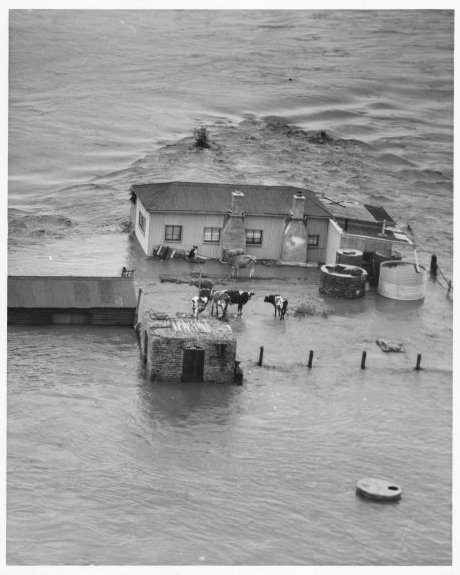
The Hunter Valley floods of 1955 were one of the worst flooding events in Australian history, causing widespread damage and loss of life.
The floods affected a large area of New South Wales, including the Hunter Valley region, causing widespread damage to homes, businesses, and infrastructure. The heavy rainfall caused flash floods and landslides throughout the state and resulted in the evacuation of thousands of residents.
The floods caused an estimated $1.5 billion in damages and resulted in the loss of 19 lives. The Hunter Valley floods of 1955 are an example of the devastating impact of extreme weather events on communities and the importance of preparedness and resilience in the face of such natural hazards.
The El Niño-Southern Oscillation (ENSO) is a natural weather pattern linked to global warming and an increase in the frequency and severity of extreme weather events in certain parts of the world, including Australia.
Sydney floods (1867)
The Sydney floods of 1867 were caused by heavy rainfall and brought on by the El Niño-Southern Oscillation (ENSO) weather phenomenon. The floods affected an area of New South Wales, causing widespread damage and loss of life.
Brisbane floods (1974)
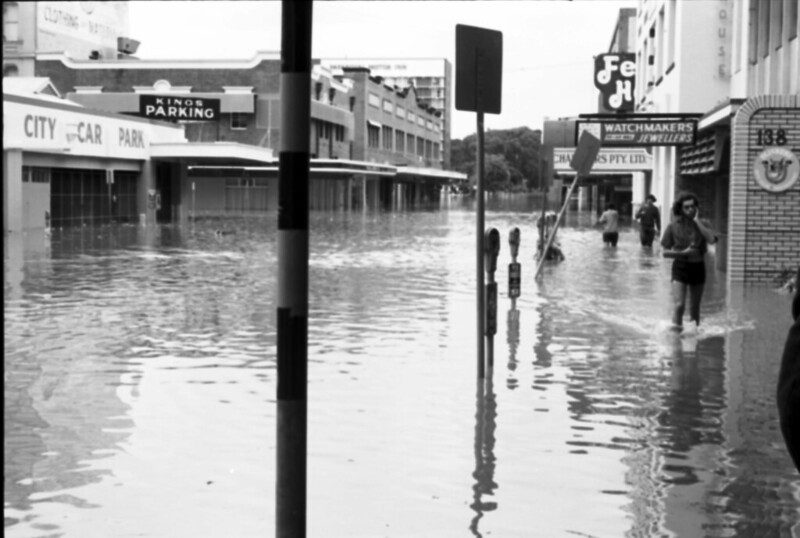
The Brisbane floods of 1974 were one of the worst flooding events in Australian history, causing widespread damage and loss of life. The floods affected a large area of Queensland, including the Brisbane region, causing widespread damage to homes, businesses, and infrastructure.
The heavy rainfall caused flash floods and landslides throughout the state, resulting in thousands of residents’ evacuations. The floods caused an estimated $200 million in damages and resulted in the loss of 14 lives.
The Brisbane floods of 1974 were a reminder of the devastating impact of extreme weather events on communities and the importance of preparedness and resilience in the face of such natural hazards.
East Coast Low (2016)
The East Coast Low of 2016 was caused by an intense weather system that brought heavy rainfall and strong winds to the eastern coast of Australia. The event caused widespread damage and flooding and was linked to the El Niño-Southern Oscillation (ENSO) weather phenomenon.
Forest Fires
Australia’s fire season, typically occurring in the summer months, can also bring extreme weather events. Notable bushfires in recent years include the Black Saturday bushfires in 2009 and the 2019-2020 bushfires, which caused widespread damage to human communities and the environment.
Research suggests that human activities, such as land use and climate change, increase bushfire risk. The BOM notes that the frequency of extreme fire weather has increased across large parts of Australia in recent decades and that this is likely due to human-caused climate change.
5 Of The Worst Bushfire Events In Australian History
Black Saturday bushfires of 2009
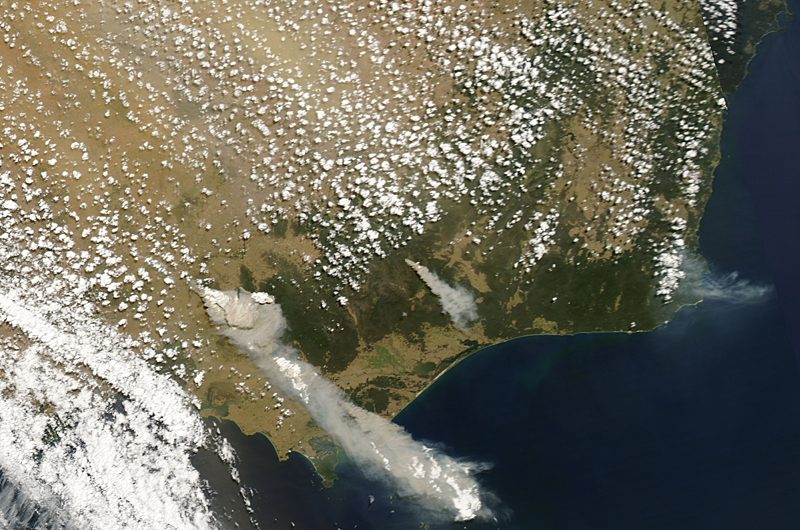
High temperatures, strong winds, and dry conditions sparked the Black Saturday bushfires of 2009. The fires affected an area of Victoria, causing widespread damage and loss of life.
Ash Wednesday bushfires of 1983
High temperatures, strong winds, and dry conditions sparked the Ash Wednesday bushfires of 1983. The fires affected an area of South Australia and Victoria, causing widespread damage and loss of life.
2009 Victorian bushfires
The 2009 Victorian bushfires were sparked by a combination of high temperatures, strong winds, and dry conditions. The fires affected an area of Victoria, causing widespread damage and loss of life.
The 2019-2020 bushfires
The 2019-2020 bushfires were sparked by a combination of high temperatures, strong winds, and dry conditions. The fires affected an area of New South Wales, Victoria, Queensland, and South Australia, causing widespread damage and loss of life.
1983 Western Australia bushfires
The 1983 Western Australia bushfires were sparked by high temperatures, strong winds, and dry conditions. The fires affected an area of Western Australia, causing widespread damage and loss of life.
Drought and Water Shortage
Drought is a persistent weather event in many parts of Australia, particularly in the eastern states. The Millennium Drought, for example, affected large areas of New South Wales, Victoria, and South Australia, leading to severe water shortages and impacting agriculture.
Recent research suggests that global warming is exacerbating drought conditions, leading to drier soils and reduced soil moisture. This highlights the importance of water management and conservation in Australia.
The Worst Droughts In Australian History
The Millennium Drought (1997-2009)
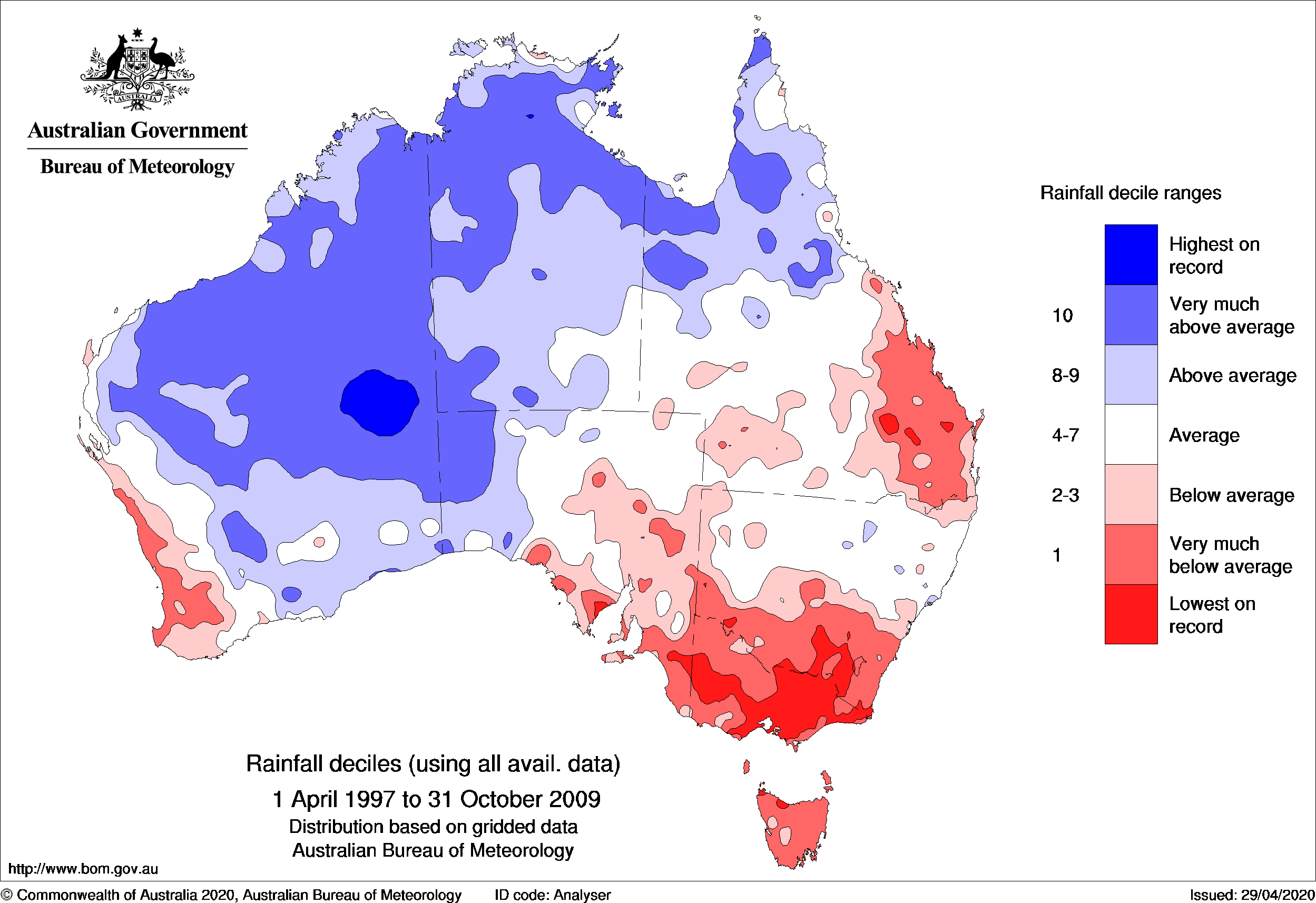
The Millennium Drought, also known as the Big Dry, was one of the worst droughts in Australian history. It affected large parts of southeastern Australia, including New South Wales, Victoria, and South Australia, causing severe water shortages and devastating the agriculture industry.
The drought was fueled by a combination of natural variability and human-caused climate change, with scientists linking the event to warming sea surface temperatures in the Pacific Ocean.
The Federation Drought (1895-1903)
The Federation Drought was one of the worst droughts in Australian history, affecting large parts of eastern Australia. The drought lasted for eight years and caused widespread damage to the agriculture industry, with many farmers losing their livelihoods.
A combination of natural variability and a lack of understanding of land management practices at the time caused the drought.
The Drought of 1982-1983
The Drought of 1982-1983 affected large parts of southern and eastern Australia, causing severe water shortages and devastating the agriculture industry.
The drought was caused by a combination of natural variability and human-caused climate change, with scientists linking the event to warming sea surface temperatures in the Pacific Ocean.
The Drought of 1902-1903
The Drought of 1902-1903 affected large parts of southern and eastern Australia, causing severe water shortages and devastating the agriculture industry. A combination of natural variability and a lack of understanding of land management practices at the time caused the drought.
The Drought of 1877-1878
The Drought of 1877-1878 affected large parts of southern and eastern Australia, causing severe water shortages and devastating the agriculture industry. A combination of natural variability and a lack of understanding of land management practices at the time caused the drought.
Heat Waves
Heat waves, characterized by extended periods of high temperatures, are also common weather events in Australia. For example, the 2019-2020 heat wave brought record-breaking temperatures to many parts of the country, leading to extreme heat stress and power outages. Research suggests that global warming is increasing the frequency and intensity of heat waves, making them more severe and dangerous.
5 Worst Heatwaves In Australian History
The 2019-2020 heatwave
The 2019-2020 heatwave in Australia was one of the worst in the country’s history, causing widespread damage and loss of life. The heatwave was fueled by high temperatures, strong winds, and dry conditions exacerbated by human-caused climate change.
The heatwave affected much of the country, with record-breaking temperatures being set in many regions, including the cities of Sydney, Melbourne, and Adelaide. The high temperatures caused widespread bushfires, which led to the loss of lives and property.
The heat wave also significantly impacted human health, with increased heat-related illnesses and deaths reported. The heatwave also caused power outages and impacted agriculture, with crops being damaged and livestock dying. The heatwave was so severe that it even caused heatwaves in New Zealand which was unusual.
The extreme heat and dry conditions also contributed to the severe drought that affected much of the country during this period. Climate scientists have warned that heatwaves of this magnitude and intensity are likely to become more common due to human-caused climate change.
The 2009 heatwave
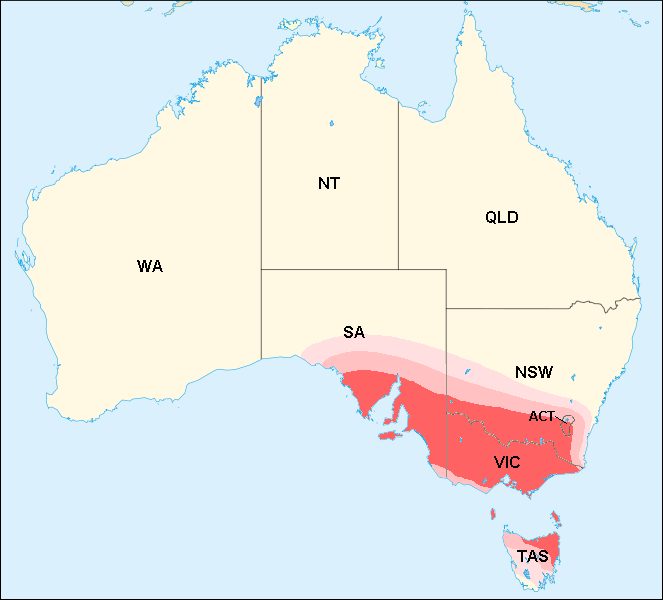
The 2009 heatwave was one of the worst in Australian history, affecting much of the country during the summer months of January and February. The heatwave was characterized by high temperatures, with many areas experiencing record-breaking heat.
In Victoria, the heatwave was particularly severe, with temperatures reaching as high as 46.6 degrees Celsius in some areas. The extreme heat caused widespread bushfires, which destroyed over 2,000 homes and claimed the lives of 173 people. The heatwave also caused power outages and infrastructure damage, leading to significant economic losses.
The heatwave also caused heat-related illnesses and deaths, particularly among the elderly and those without access to air conditioning. The high temperatures also led to water shortages, restrictions, and damage to crops and livestock.
The heatwave was linked to the El Niño-Southern Oscillation (ENSO) weather phenomenon and human-caused climate change, which has been linked to an increase in the frequency and intensity of heatwaves globally.
The 1902 heatwave
The 1902 heatwave was one of the worst in Australian history, affecting much of the country, particularly the eastern states. The heatwave began in January and lasted for several months, with temperatures reaching record highs in many areas.
The heatwave was caused by a combination of high-pressure systems and the El Niño-Southern Oscillation (ENSO) weather phenomenon. The heatwave brought widespread drought, bushfires, and heat-related illnesses, causing significant damage to crops and infrastructure and loss of life.
The heatwave also contributed to the severe 1902 drought, which affected much of the country and significantly impacted the agricultural industry. The heatwave of 1902 is considered one of the worst natural disasters in Australian history, with its impact still felt today in many parts of the country.
The 1914 heatwave
The 1914 heatwave was a severe heatwave that affected Australia during the summer months of 1914. The heatwave was characterized by high temperatures, low humidity, and strong winds, which contributed to the spread of bushfires and heat-related illnesses.
The heatwave was particularly severe in the southeastern states of Victoria and New South Wales, where temperatures reached record levels. The heatwave lasted for several weeks, causing widespread damage to crops, livestock, and human fatalities.
The 1924 heatwave
The 1924 heatwave was one of the worst heatwaves in Australian history, affecting large parts of the country during the summer months. The heatwave brought high temperatures and severe drought conditions, causing widespread damage to agriculture and water shortages.
A combination of natural variabilities and human activities, such as land use and burning fossil fuels, caused the heat wave. The high temperatures also significantly impacted human health, leading to a spike in heat-related illnesses and deaths.
The heatwave also exacerbated bushfire conditions, leading to a number of devastating fires. Despite the efforts of the Bureau of Meteorology and other organizations to prepare for and respond to the heatwave, the damage and loss of life were significant.
The heatwave serves as a reminder of the importance of understanding and preparing for extreme weather events and the impact of human activities on the climate.
Sea Level Rise

Sea level rise is a global phenomenon caused by warming global temperatures, which causes seawater thermal expansion and land-based ice melting.
Sea level rise can significantly impact coastal areas, including increased flooding and storm surges, erosion, and damage to infrastructure.
Australia’s east coast is particularly vulnerable to sea level rise, and the BOM projects that sea levels in the region will continue to rise in the coming decades.
List Of Sea Level Rising Instances In Australia
The Great Barrier Reef
Sea levels have been rising around the Great Barrier Reef, one of Australia’s most iconic and important coastal ecosystems. Rising sea levels have led to increased coral bleaching and the loss of mangrove and seagrass habitats.
Sydney
Sea levels around Sydney have been rising at a rate of about 1.1mm per year over the past century. This has led to increased coastal erosion and flooding in low-lying areas.
Perth
Sea levels around Perth have been rising at a rate of about 1.2mm per year over the past century. This has led to increased coastal erosion and flooding in low-lying areas.
Gold Coast
Sea levels around the Gold Coast have been rising at a rate of about 1.2mm per year over the past century. This has led to increased coastal erosion and flooding in low-lying areas.
Adelaide
Sea levels around Adelaide have been rising at a rate of about 1.3mm per year over the past century. This has led to increased coastal erosion and flooding in low-lying areas.
Hobart
Sea levels around Hobart have been rising at a rate of about 1.3mm per year over the past century. This has led to increased coastal erosion and flooding in low-lying areas.
Cairns
Sea levels around Cairns have been rising at a rate of about 1.4mm per year over the past century. This has led to increased coastal erosion and flooding in low-lying areas.
Darwin
Sea levels around Darwin have been rising at a rate of about 1.4mm per year over the past century. This has led to increased coastal erosion and flooding in low-lying areas.
All of this is caused by global warming, as the sea level rise due to the melting of glaciers and ice caps and the thermal expansion of the ocean. These sea level rises can significantly impact coastal communities, infrastructure, and ecosystems, making it critical to understand and prepare for the potential impacts of sea level rise in Australia.
Extreme Weather Event Attribution
Recent research suggests that human-caused climate change exacerbates many of Australia’s extreme weather events.
Attribution studies examining the link between specific weather events and human activities have found a high degree of confidence that climate change is increasing the likelihood and severity of events such as heat waves and heavy rainfall.
Climate models are also useful tools in understanding the relationship between human activities and extreme weather events.
Conclusion
Australia’s unique and diverse climate brings a variety of severe weather events that can have devastating impacts on the country and its inhabitants. Understanding and preparing for these events is crucial for ensuring public safety and minimizing damage.
Additionally, research suggests that the impacts of human-caused climate change are exacerbating many of these extreme weather events. Climate change adaptation, including mitigation efforts and emergency preparedness, is crucial for minimizing the risks associated with these events.
Resources
Australian Bureau of Meteorology. State of the Climate Report
The Australian Bureau of Meteorology’s State of the Climate Report is a comprehensive report that provides a detailed analysis of the state of the climate in Australia, including recent climate trends and projections for the future.
The report is released annually and based on the latest scientific research and data from various sources, including satellite observations, ground-based measurements, and climate models.
The report covers a wide range of topics, including temperature, rainfall, extreme weather events, sea level, and ocean conditions. It provides an overview of the impacts of climate change on different regions and sectors of the Australian economy. The report is intended to inform decision-making and planning by government agencies, businesses, and the community.
The Australian Government’s Climate Council
This is a leading resource on the impacts of weather extremes in Australia, providing information and analysis on these events’ causes, effects, and future projections. Their website offers a wealth of information and resources, including reports, articles, and infographics on topics such as heatwaves, bushfires, floods, and droughts. The organization is also on social media, regularly sharing updates and insights on the latest weather and climate science developments.
Another resource is the Australian National University’s Climate Change Institute, which researches climate change’s impacts on Australia and the region and provides information and resources to the public, policymakers, and industry. They have a website that offers a variety of resources, including reports, articles, and data sets on topics such as temperature and precipitation trends, sea level rise, and extreme weather events.






































